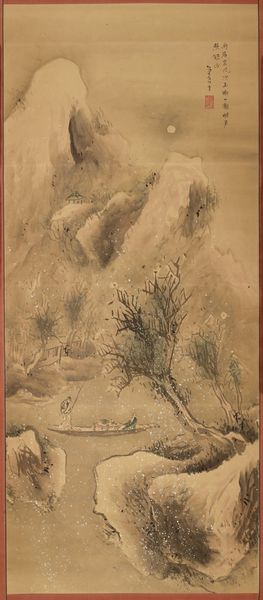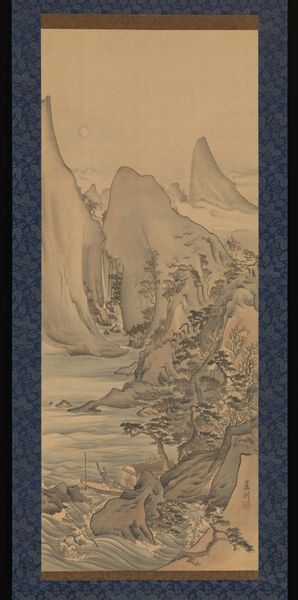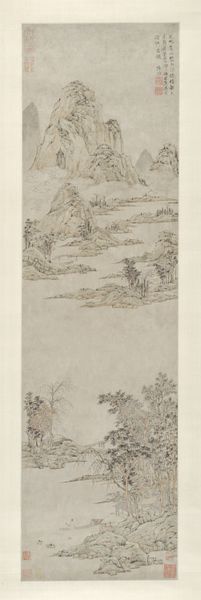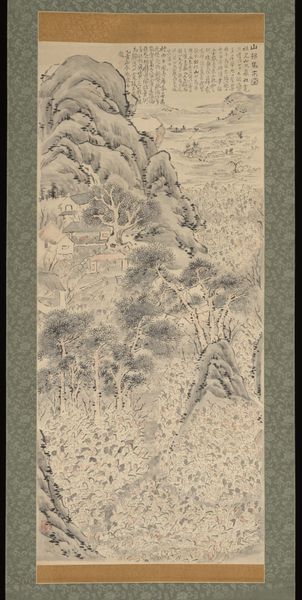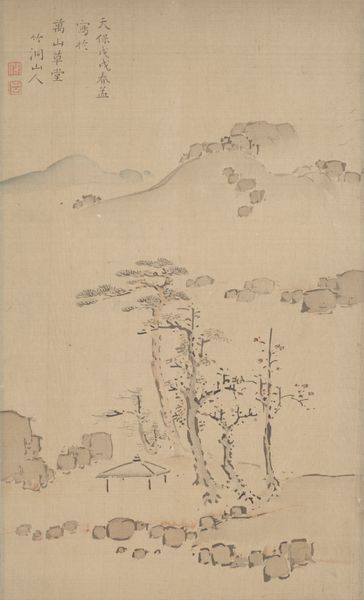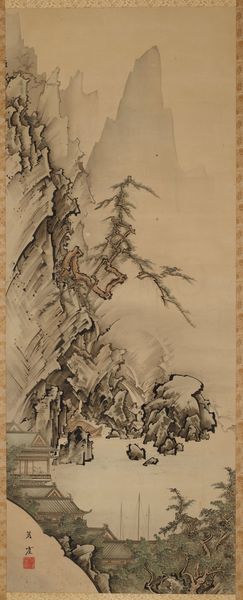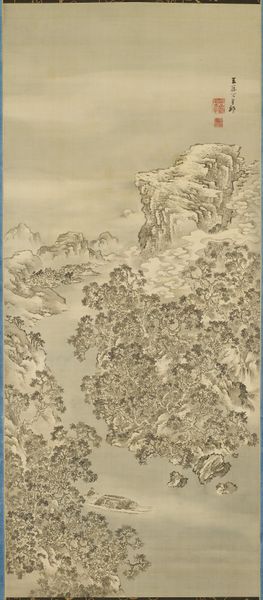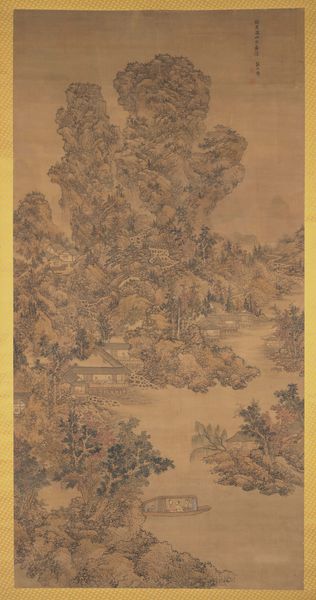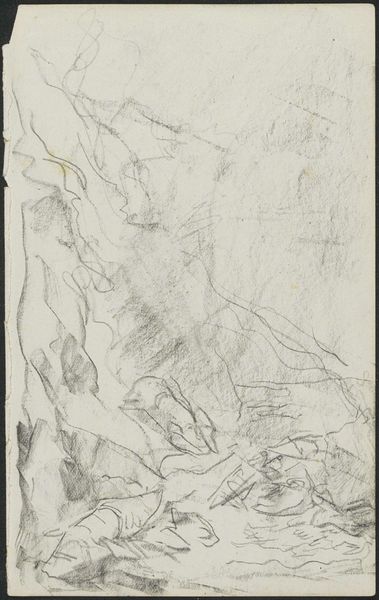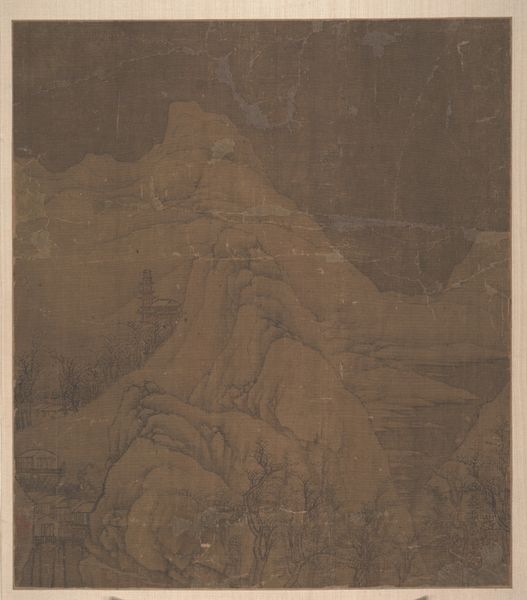
drawing, ink
#
drawing
#
ink painting
#
asian-art
#
landscape
#
ink
#
calligraphy
Dimensions: 60 3/4 × 27 3/4 in. (154.31 × 70.49 cm) (image)79 1/2 × 32 3/4 in. (201.93 × 83.19 cm) (mount)
Copyright: Public Domain
Curator: What a wonderfully tranquil scene. There’s a meditative quality to this ink drawing, almost like a lullaby for the eyes. Editor: Indeed. Nakabayashi Chikuto’s “Landscape with a Man Seated by a Stream,” created in 1829, provides a glimpse into the artist's vision of nature and humanity's place within it. It is far more than a simple depiction. It’s an articulation of social philosophy. Curator: You’re right. There is a delicate dance between precision and fluidity in the execution of the landscape. The lone figure adds a quiet sense of scale. And it feels more about being within nature, rather than dominating it. I wonder if the tiny scale of the figure has anything to do with calling attention to the insignificance of humans in the natural world. Editor: The human presence certainly emphasizes our fleeting existence against the backdrop of enduring nature. This idea permeates Confucianism, Taoism, and Buddhism. In fact, a Confucian ideal suggests humanity is only moral through ethical self-cultivation which itself arises through direct communion with nature. We can read into this a historical cry for more sustainable relations with land. The landscape traditions are so closely related to socio-political realities. Curator: It's fascinating how you link the visual elements to socio-political narratives. For me, this image makes me reflect on our ability to be soothed, just through simply connecting with nature, especially as opposed to some kind of human domination, which so often seems to take precedent. It almost invites the viewer into a moment of serene contemplation, you know? Editor: I concur! This is not only a commentary on our insignificance within the natural order, but is also calling for a deep restructuring of society’s relations to natural space. Curator: The more I gaze at it, the more I feel a gentle reminder to appreciate the quiet moments, the understated beauty all around us. It invites you to find harmony, doesn’t it? Editor: Yes. By understanding the philosophy imbued in this artwork, we are able to understand it in the long and troubled context of humans relating to our home.
Comments
minneapolisinstituteofart over 1 year ago
⋮
A Nagoya native, Chikutō moved to Kyoto in 1803. He copied the styles of the Chinese masters, including Ni Zan (1301–74), one of the “Four Great Masters of the Yuan Dynasty,”who used a simple composition and sparse brushwork for his landscape paintings. This scene echoes the work of Ni Zan in its stony riverbank, lonely hut, and trees in the foreground.
Join the conversation
Join millions of artists and users on Artera today and experience the ultimate creative platform.

